How splendid and diverse can a country be in celebrating the same 9 days of Navratri?!!!!
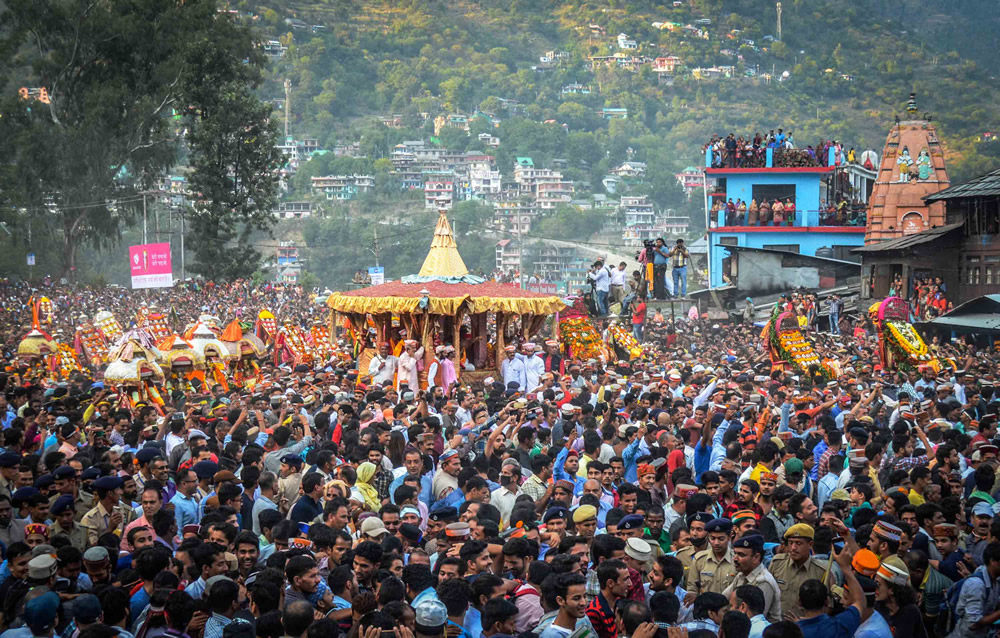
Diversity is healthy. Here, everything is special. Depending on the region of the nation we are in, everything from the language to the cuisine to the culture to the clothing varies. Therefore, it should come as no surprise that our methods of worship alter in accordance with the many traditions and rituals that give each location its own unique flavour. Even while the message being sent via worship may be the same, our method of conveying it has a whole distinct taste.
Navratri in Tamil Nadu
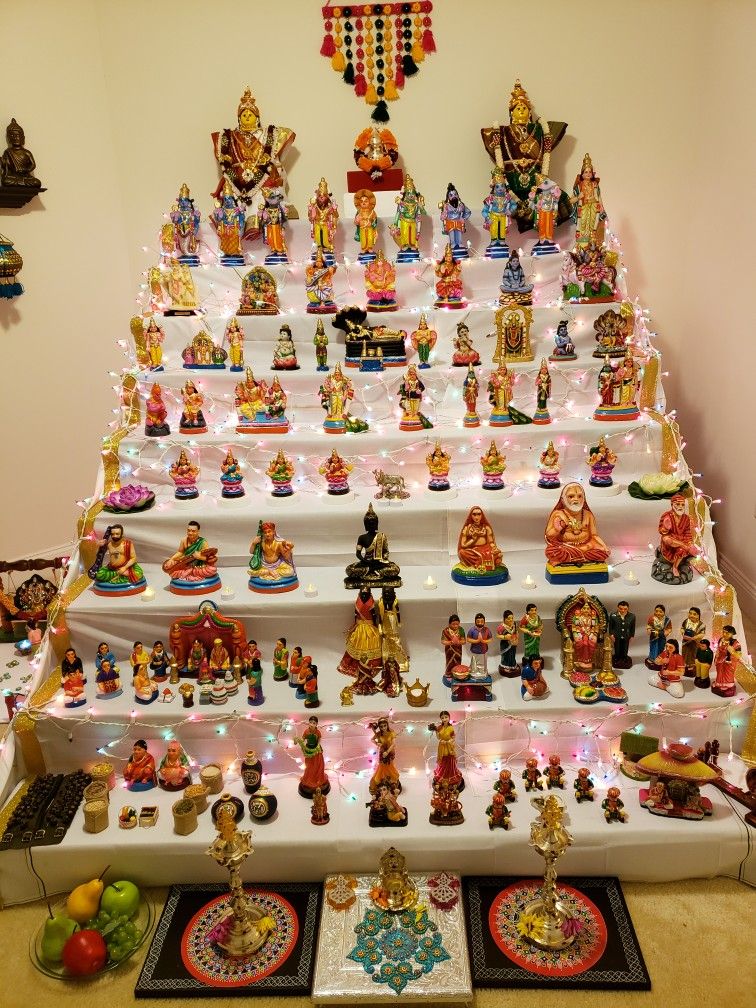
Goddess Durga, Goddess Lakshmi and Goddess Saraswathi are worshiped in these religious days. Kolu is an integral part of the Navratri in Tamil Nadu. Kolu is display of a staircase of nine stairs, displaying the nine nights of Navratri. The stairs are decorated with beautiful idols of gods and goddesses and dolls mostly made of wood, clay or marble.
They are light with fancy lights and flowers to make it more splendid. These dolls have been inherited from our ancestors. Friends, family and neighbours are invited and bangles, saree, jewellery and other gifts are exchanged. Nine different sundals are made in these nine days and offered to the God and given to people who are invited home. Vedic chants and devotional songs are sung by women also followed by Bharatanatyam performed by kids.
Navratri in Andhra Pradesh
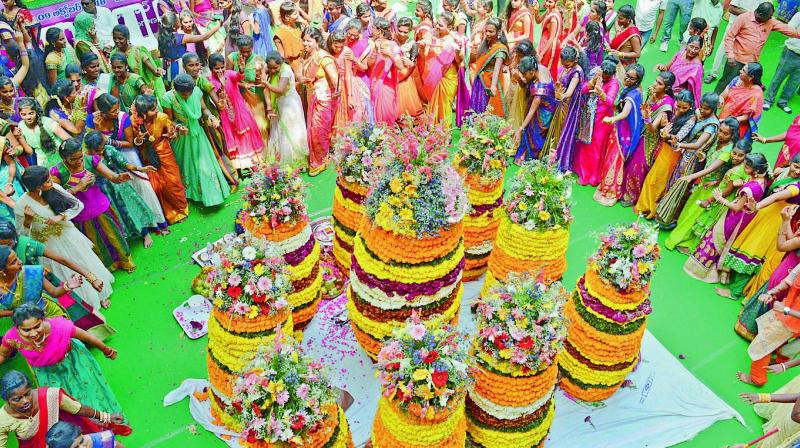
The devotees of Andhra Pradesh observe Bathukamma Panduga and goddess Maha Gauri, the goddess who speaks to femininity, throughout the nine days of Navratri. Women do a pooja and create flower stacks in the traditional manner over these joyful days using local blooms. This stack is then let in the lake or other water body during the conclusion of Navratri days.
Navratri in Karnataka
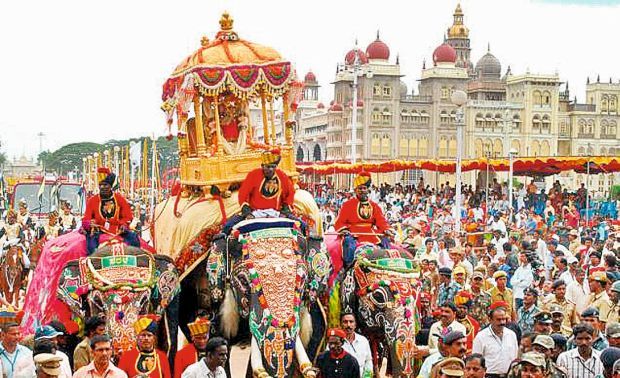
Navratri is celebrated as Dasara in Karnataka, celebrating the victory of Lord Rama, over 10- headed demon king Ravana. The name is derived from the Sanskrit words ‘dasha’ and ‘hara’ meaning ten’ and ‘defeat’ respectively. Symbolizing the victory of good over evil king Ravana who abducted Rama’s wife Sita. Mysore city has a tradition of celebrating Dusara in the same manner as celebrated back in 1610 during the Vijayanagar dynasty.
Yakshagana and dramas from Puranas are enacted on Navratri nights in different parts of the city. Mysore palace is lit with thousands of lights during the festival. Numerous religious and cultural performances take place in front of the palace. Procession of Goddess Chamundeshwari placed on the golden top on the elephant is the prime attraction followed by procession of dance groups, decorated elephants, horses, camels, music bands. Dasara exhibition holding stalls selling various handicrafts and artifacts is also held in the ground opposite to the palace.
Navratri in Kerala
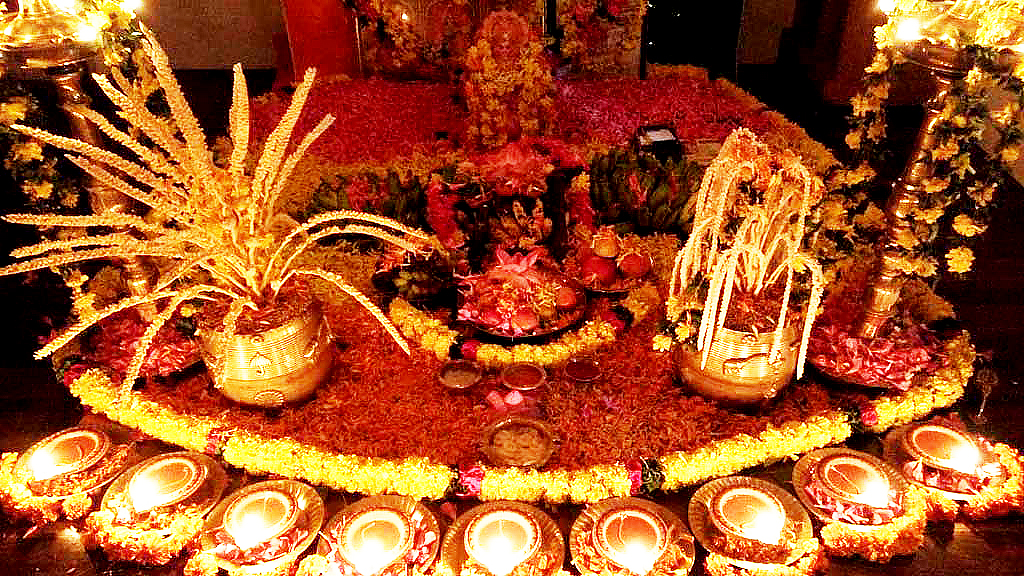
The Durga Puja is regarded as a symbol of education in Kerala and transcends all forms of religion. The event, Vidhya-Aarambham, which literally translates to "education beginning," commemorates the day when every kid in the state of Kerala began receiving formal instruction. The final three days of Durga Puja are when the biggest festivities take place. All coursework and employment requiring any form of expertise are stopped before to the Poojavaipu.
For puja, books and tools are placed in front of Sarasvati, the goddess. Offerings include fruits, pounded rice, roasted paddy, jaggery, etc. The Sarasvati pooja is conducted the next day in the morning and the evening. On the Vijayadashami holiday It is known as Puja Eduppu and involves returning the tools and books from the room. Any kind of learning officially starts on this day. On sand or rice, teachers have their students write the letters. People thank their professors with presents and ask for blessings. Concerts including dance and music are also held all around the state.
Navratri in Northern states
Navratri in West Bengal
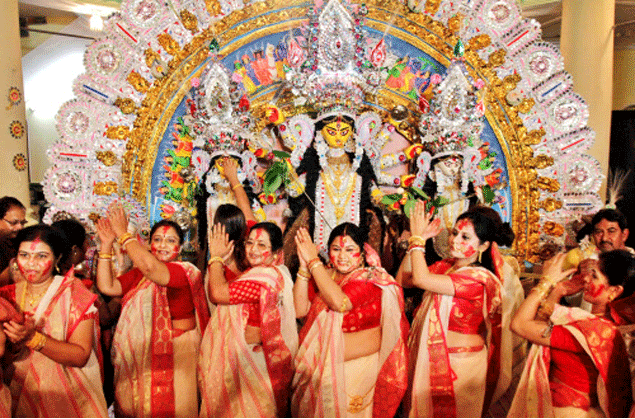
Durga Puja is the main annual festival of the Bengalis and celebrated in Odisha, Assam, Tripura and Jharkhand. Durga Puja observes the victory of Durga over Mahishasura. Pandals and life-size statues of Goddess Durga are installed, worshiped and celebrated. Dressed in traditional attire. Evening prayers are offered and special dance (dhunuchi naach) is performed. Durga puja is so incomplete without wearing colourful clothes and dancing to dhaak beaks, munching delicious bhogs and going on Pandal hopping.
Navratri in Maharashtra

Navratri celebration Navratri as the ‘New beginning’ and buy property and initiate new business. Ghatasthapana is a ritual on the first day of Navratri were a small bed of mud is placed in pot and grains are allowed of sprout. Pujas are offered to the pot and various rituals are performed. Kali puja is performed int the first two days, followed by Lakshmi puja for the next three days and Saraswathi puja for the last four days. Ghat puja is performed on the nineth day. Vijayadashami is on the 10th day of Navratri, were men collect Apta tree leaves called ‘sona’ meaning gold. They visit their neighbour and families and exchange it and get blessings. Garba raas and Dandita nights are so much fun and a must have ritual in Maharastra.
Navratri in Punjab
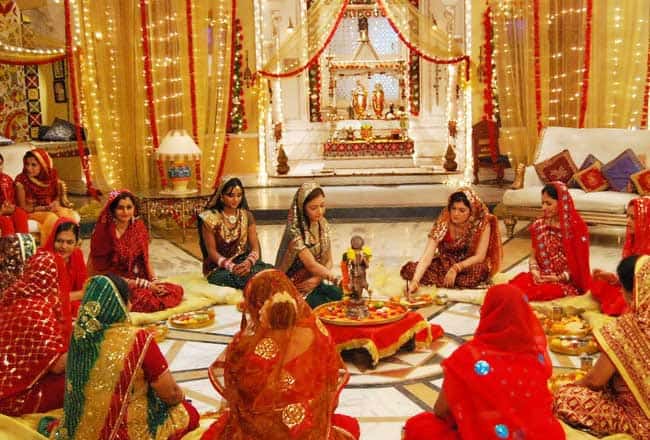
For the first seven days of the Navratri festival, the majority of Punjabis fast. In the majority of Punjabi cities, gatherings known as Jagrans take place when worshippers gather to sing hymns. Fasts are broken on the last day by inviting nine local young girls who have been recognised with tokens of appreciation. These nine females are said to be the nine various Maa Shakti avatars that they represent.
Navratri in Gujarat

Gujarat has a distinctive manner of commemorating Navaratri and it is this variation of the festivities that has influenced modern society. To honour Durga and her nine various incarnations, devotees conduct a nine-day fast. Women who are fasting commit their prayers to an earthen pot that is lighted with diyas every night (candles). The garbo pot, which symbolises the source of life, and the shakti light (power). In Gujarat, the traditional dance known as garba raas is done by both men and women in front of a Durga statue called as a garbo. The most favoured state for Garba evenings is Gujarat. Devotees often observed fasting and adoration for Maa Shakti. After blowing diyas, a symbol of the source of life, men and women perform traditional dances including garba and dandiya.
Navratri in Himachal Pradesh

The tenth-day festivities, known as Kullu Dussehra, commemorate Lord Ram's homecoming to Ayodhya. On this day, brightly coloured decorations cover the streets across the whole valley. The festival is celebrated with tremendous pomp and fervour, and one of the highlights is a large procession that brings idols of gods and goddesses to the main area. This day is also marked by a variety of dance, musical, and other cultural acts that provide guests a special chance to get to know the local way of life.
The festival comes to an end with the world-famous performance of Lankadahan (burning of Lanka) on the Beas River. The state administration has also given Kullu Dussehra, which draws more than 500,000 visitors from all over the globe, the status of an international festival. On the first day of the festival, hundreds of people assemble to honour local deities while music and colour create a calm atmosphere. The first day begins with a big festival, and a statue of the local god Lord Raghunath is placed on a gorgeously crafted chariot that the residents drag by ropes to various locations throughout the city.